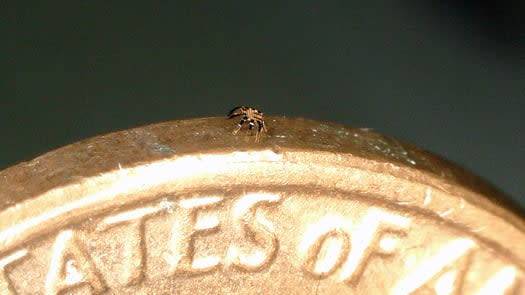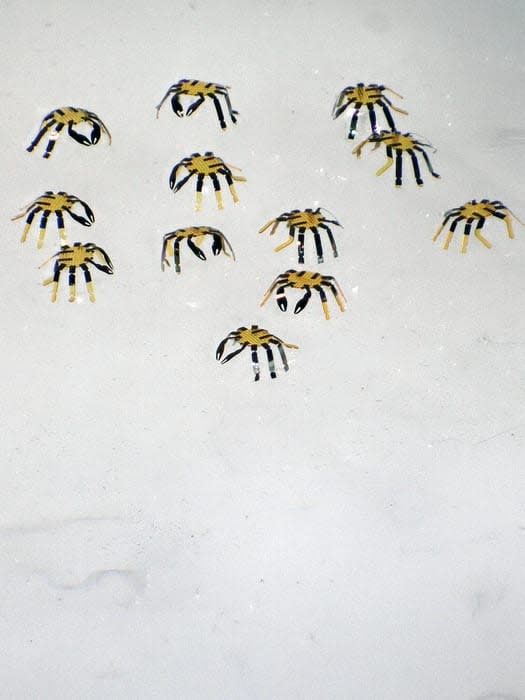This Tiny Robotic Crab Is the World’s Smallest Remote-Controlled Walking Robot

The next time you feel a bug crawl across your skin, have no fear—it might just be a tiny robot crab. (Okay, maybe you can have some fear.)
Engineers at Northwestern University have unveiled a tiny robotic crab that they claim is the smallest ever remote-controlled walking robot. According to the team’s new paper published Wednesday in the journal Science Robotics, the machine is just a half-millimeter wide and can sit on the edge of a penny with room to spare.
Horrifyingly, the researchers also created a veritable swarm of other creature-inspired machines, including robotic beetles, crickets, and inchworms. After all, they were so preoccupied about whether they could that they didn’t stop to think if they should create robot creepy crawlies. While spine shivering, the team believes that their devices are a big step forward to creating practical robots that can perform remote-controlled tasks in tiny spaces.
“You might imagine micro-robots as agents to repair or assemble small structures or machines in industry or as surgical assistants to clear clogged arteries, to stop internal bleeding or to eliminate cancerous tumors—all in minimally invasive procedures,” John A. Rogers, professor of materials science and engineering at Northwestern University and lead author of the study, said in a press release.
The robot isn’t controlled using electricity. It’s made of a shape-memory alloy that allows it to transform into certain shapes when heated before reverting back when it cools. Using a laser beam, the team was able to heat specific parts of the robot causing it to “walk.” For example, moving the laser from left to right causes the robot to move from right to left.
“Because these structures are so tiny, the rate of cooling is very fast,” Rogers said. “In fact, reducing the sizes of these robots allows them to run faster.”
The crabs can crawl, walk, and jump around using the method. Of course, it’s not yet completely practical considering it requires a laser beam pointed at it to move. But it does open the door to future, more sophisticated micro-robots… that hopefully won’t take over the world in a massive swarm.

Smaller than fleas, several miniature crab robots stand together.
Got a tip? Send it to The Daily Beast here
Get the Daily Beast's biggest scoops and scandals delivered right to your inbox. Sign up now.
Stay informed and gain unlimited access to the Daily Beast's unmatched reporting. Subscribe now.

